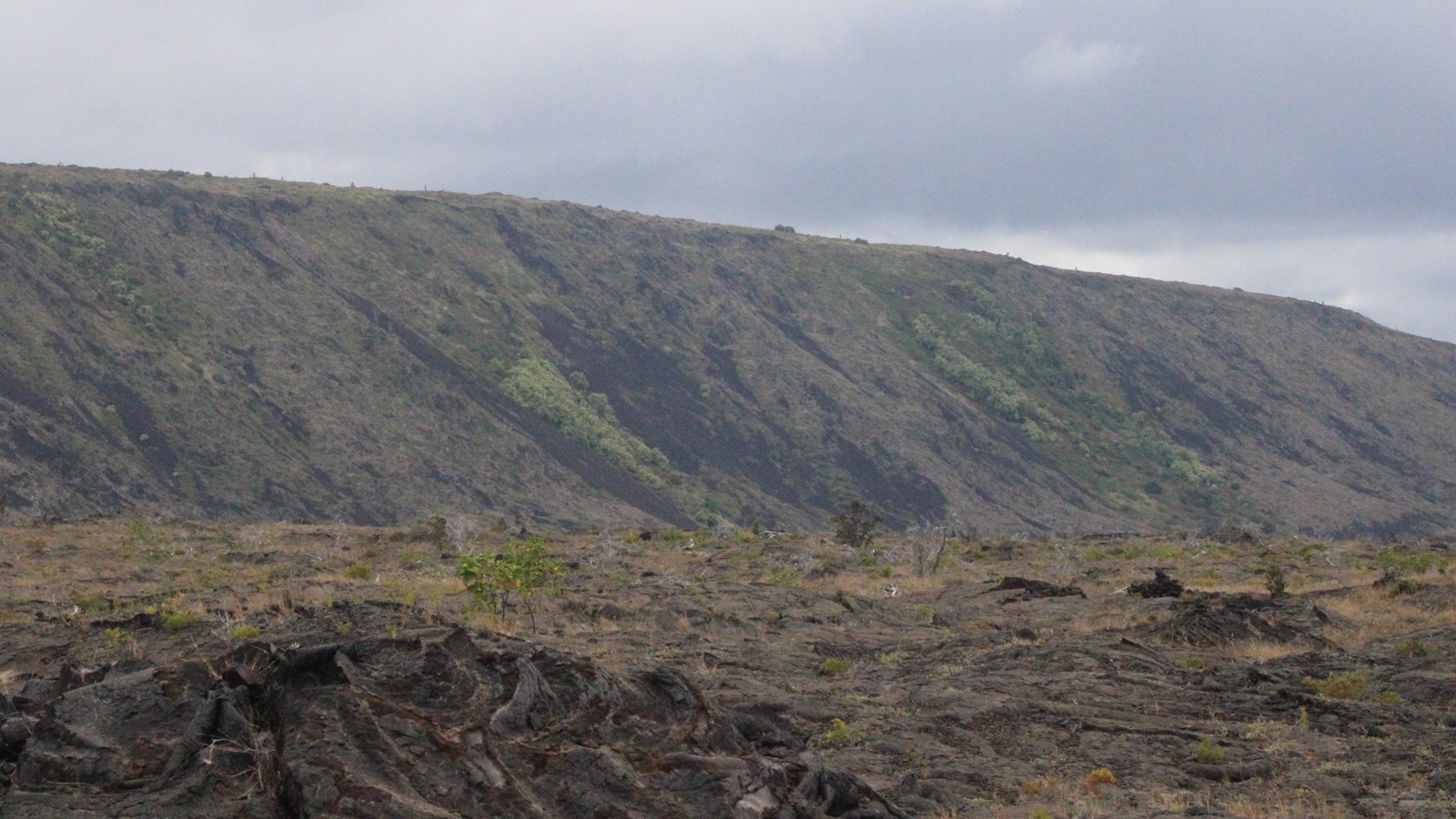Last updated: April 30, 2021
Place
Stop 1- Puʻuloa Petroglyphs

NPS Photo/M.Newman
Quick Facts
Amenities
1 listed
Trailhead
Think about a cherished family heirloom that may not seem valuable to someone else. What is it that makes it valuable?
This rugged volcanic landscape is in the ahupuaʻa (divisional land system) of Pānau Nui. Ahead is a volcanic pressure dome called Puʻuloa (Long Hill). Centuries ago, this place was once part of a thriving Hawaiian community. Rock-carved images known as petroglyphs cover this area. Petroglyphs were made using pōhaku (rock). Native Hawaiians used a sharp stone to peck or incise impressions into the lava surface. The archaeological site of Puʻuloa contains over 23,000 petroglyph images making this the largest petroglyph site in the state of Hawaiʻi.
Decades ago American anthropologist Kenneth Pike Emory (November 23, 1897 – January 2, 1992), seemed to dismiss the importance of petroglyph sites stating;
“The most that can be said for picture writing [petroglyphs] among Hawaiians is that it is in an experimental stage. Certain places and bowlders were favored for the carving of petroglyphs partly on account of the suitableness of the rock and partly, no doubt, because the practice had there gained a start. No special significance need to be attached to the location of the petroglyph centers except perhaps that they were places often visited by the travelling native.”
Continue on the tour to find out if he was right or wrong.
